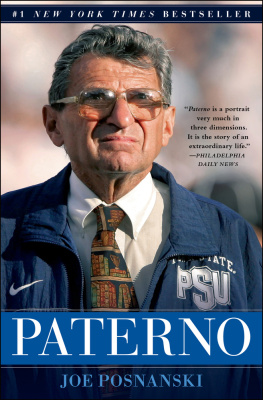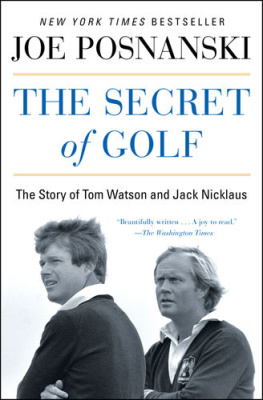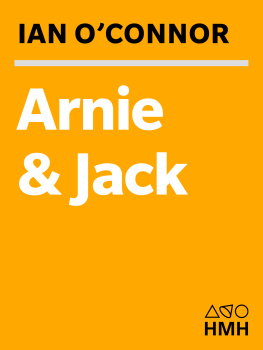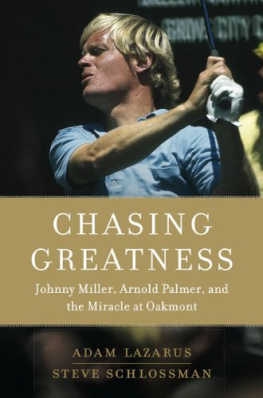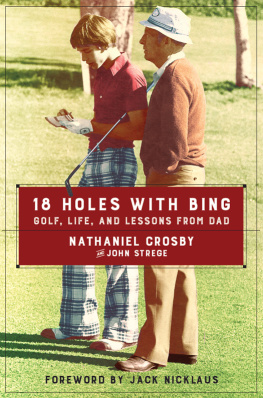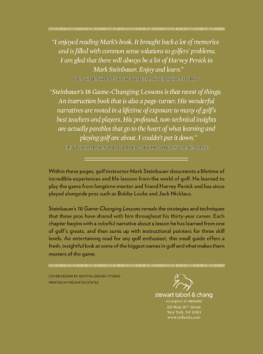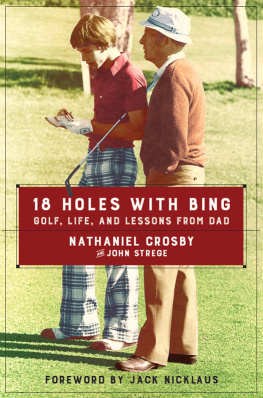Thank you for downloading this Simon & Schuster eBook.
Join our mailing list and get updates on new releases, deals, bonus content and other great books from Simon & Schuster.
C LICK H ERE T O S IGN U P
or visit us online to sign up at
eBookNews.SimonandSchuster.com
We hope you enjoyed reading this Simon & Schuster eBook.
Join our mailing list and get updates on new releases, deals, bonus content and other great books from Simon & Schuster.
C LICK H ERE T O S IGN U P
or visit us online to sign up at
eBookNews.SimonandSchuster.com
For Margo, Elizabeth, and Katie
HITTING ON THE RANGE
Ben Hogan found the secret first. The other golfers of the time looked at Hogan with a mixture of wonder and pity. He practiced golf. He practiced swinging a golf club mornings, afternoons, evenings, and well into darkness. He practiced until his hands bled, until hard scabs formed, and then until they bled again. Years later, when people talked about how much Hogan suffered for his craft, he corrected them. I did not suffer, he told them. I loved it all. How could he explain this? Hogan loved to practice more than he loved playing the game itself.
Why? Hogan was a haunted man. His father had committed suicide when Ben was nine; many would believe that Chester Hogan shot himself while young Ben watched. Hogan never said anything about that. He became famous for being remote. Though he played golf in front of crowds, he always seemed alone. In Scotland they called him the Wee Ice Mon.
One story: At the Masters in 1947, Hogans playing partner, and one of his closest friends on tour, Claude Harmon, made a hole-in-one at Augusta Nationals famous 12th hole. Hogan made a birdie on the same hole. After Harmon absorbed all the raucous cheers from the crowd, he noticed Hogan doing an unusual thing: walking over to say something. This had never happened before. Finally, Harmon thought, Ben Hogan is going to congratulate me and tell me I hit a nice shot.
Hogan took a drag from his cigarette, flicked it away, and said, You know, Claude, I cant remember the last time I made a birdie on that hole.
Until Ben Hogan came along, the goal of professional golfers was to make it all look as easy as possible. Many were hustlers, con men, gamblers, who made the bulk of their living at country clubs, where they coaxed rich amateur golfers into believing that they never practiced. The most admired professional golfer was Walter Hagen, a man who would drink and carouse all night and play breathtaking golf the next day. His motto: Dont hurry, dont worry, youre only here for a short visit. So dont forget to stop and smell the roses.
The best players of Hogans timeSam Snead, Gene Sarazen, and especially Byron Nelsonfollowed Hagens path. They played golf for money and practiced as little as possible. It was Nelson in particular, with his glorious and unvarying swing, who baffled Hogan. He was a great player, but Hogan believed that with effort he could be better. Hes too lazy to practice, Hogan said.
Nelson responded, Tell Ben I already learned how to swing a golf club.
Nelson and others simply did not get what Hogan wanted. He was good enough to play golf for money. What was all the practice about? Then, in late 1947, the year he turned thirty-five, Hogan found what he had been seeking. He found a secret. He had been a good golfer. After he stumbled upon the secret, he would grow into an almost mythical figure.
What did he find that day? People still ask. All anyone can say for sure is that after learning this secret, Hogan hit every drive down the middle of the fairway. His approach shots all danced around the hole. Golf, like life, is unconquerable, and yet Hogan never missed. He won his first U.S. Open in 1948, and he won nine other tournaments.
In early 1949, Hogan was almost killed after a head-on collision with a Greyhound bus. The secret, he would say, inspired his recovery. Sixteen months after the crash, though he still had difficulty walking, he returned to play in the U.S. Open. He won. It was the biggest sports story of 1951. A year later, he won the Masters and the U.S. Open. Then, in 1953, he won the Masters, the U.S. Open, and the British Open. Up to that moment the greatest achievement in golf history had been Bobby Joness Grand Slam (all four majors in one year) of 1930: the U.S. and British Opens and the U.S. and British Amateur Championships. In many ways, Hogans feat was even more remarkable. New York threw him a ticker-tape parade.
We are proud of you not only as a great competitor and master of your craft, President Eisenhower wrote in a telegram handed to Hogan as the parade began, but also as an envoy extraordinary in the business of building friendship for America.
Hogan looked exhausted. His wife said he had lost twenty pounds. He told the assembled press that he was happy with his achievement, but he was ready to get back to practice.
Over the years, Hogan developed an aura, becoming the closest thing in golf to a holy man. In his later years, his ability to putt a golf ball into the hole abandoned him. He grew so spooked by his putting troubles that he would stand over a putt, frozen as a statue, as if unable even to pull back the club. But he continued to hit his woods and irons purely well into his sixties. The secret he had discovered in 1947 sustained him. When he practiced, crowds formed around him, and in those crowds were other professional golfers trying to learn what only he knew.
What did Hogan find in 1947? He called it the Secret. Well, at first he called it a secret, but over time it became the Secret . Golfers everywhere had to know what it was; it became something of a national obsession. In 1953 Golf Digest wrote a story titled Hogans Secret, which claimed that the key to his staggering consistency was a twenty-minute training routine that involved hitting golf balls with his feet clamped together as if he were bound by rope and about to be thrown onto railroad tracks. Many golfers tried the program; their shots still sprayed left and right.
On April 5, 1954, the cover of Life magazine featured saguaro cactuses at sunset. The main headline, The World We Live in (Part VI): The Desert, was in the top right-hand corner. Below that, in only slightly smaller letters, was another headline: Ben Hogans Secret: A Debate.
I have a secret, Hogan was quoted as saying. Its easy to see if I tell you where to look.
In Life that week, seven golf experts tried to unravel the Secret. The PGA champion Walter Burkemo theorized that Hogans trick was that he drops his hands at the top of the backswing. Claude Harmon guessed the key had something to do with the lack of rotation of Hogans body as he swung: Hogans body doesnt turn, it just slides forward. Sam Snead, Hogans greatest rival, believed the whole Secret thing was nonsense, but he took a guess anyway and said Hogan hit the ball straight every time because his hands never crossed during the swing. These guesses sent golfers across America scurrying to the practice range to try out the possibilities. And golf scores across the country stayed exactly where they had been.
A few months later, Hogan himself graced the cover of Life magazine. The headline: Ben Hogan Tells His Secret. He was reportedly paid $10,000more than twice the median income of families in 1954to divulge the Secret. He explained that the thing he had discovered on the practice range that day in 1947 was something old Scottish golfers called pronation. This involved bending his left wrist backward at the top of the backswing after making a slight grip change.
Almost immediately, people were convinced that Hogan was holding out. Pronation? This could not be the real Secret. People tried the pronation thing, and if anything they found their slices drifting farther to the right and their snap hooks burying deeper in the bushes. Golfers tried changing their grips, tried bending their wrists more, tried pronating all they could. Their golf didnt get any better. This was no secret.
Next page
